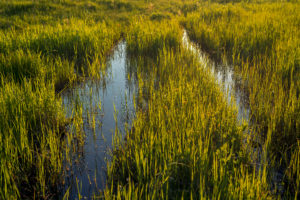
On February 14, 2019, the US Army Corps of Engineers and US EPA (Agencies) published in the Federal Register the proposed rule to revise the definition of “Waters of the United States,” the term that identifies the scope of federal jurisdiction under the Clean Water Act. The proposed rule is the second step in a two-part process to revise the definition, consistent with one of the first Executive Orders issued by President Trump. The Clean Water Act prohibits the unpermitted discharge of pollutants, including soil or fill material in water bodies, wetlands and even some normally-dry lands. Accordingly, as the definition of waters of the United States (WOTUS) expands, so does the federal government’s control over construction and other activities affecting these areas. The Agencies note that they are attempting to “preserve[] the traditional sovereignty of States over their own land and water resources[,]” and the proposed rule is widely expected to narrow the overall number of waters subject to federal jurisdiction.
The comment deadline on the proposed rule is April 15 — there are four points to be aware of in deciding whether to comment on the proposal:
- The number of wetlands subject to federal jurisdiction will decrease, as the Agencies are largely following Justice Scalia’s more narrow test for federal jurisdiction. Current law regarding WOTUS depends on the state where the water body is located, as we have covered previously. Under the existing law in states that follow the Obama-era WOTUS rule promulgated in 2015, a wetland is considered WOTUS if it is “adjacent” to a tributary or navigable water. A wetland is “adjacent” if, among other possibilities, it is (1) within 100 feet of the ordinary high water mark of a tributary or navigable water; (2) within the 100-year floodplain of a tributary or navigable water; or (3) located within 1,500 feet of the Great Lakes or a high tide line. Under the new proposal, a wetland will be a federally-covered water if it is abuts or has a direct hydrologic surface connection to another WOTUS. This test is inspired by Justice Scalia’s plurality opinion in the Rapanos decision, and President Trump directed the Agencies to consider this approach in an Executive Order. In adopting this more straightforward approach, the Agencies have noted their preference for bright lines and predictability. This surface connection must be either perennial or intermittent, and cannot be present “ephemerally” (only in response to rain or snow). Under the new proposal, close does not count — there must be a direct surface connection.
- The proposed rule favors predictability and certainty in casting aside “significant nexus” test. For many years, the regulated community has complained about the lack of certainty in determining whether a particular water body is subject to federal jurisdiction — both the Obama-era and Trump-era rules acknowledge this uncertainty, and state that they are designed to simplify the process. Under the 2015 rule, however, the Agencies continued to evaluate some waters under the fact-specific evaluation to determine whether a particular water body had a “significant nexus” to another WOTUS — if it did, then both waters were under federal jurisdiction. This test is based on Justice Kennedy’s Rapanos concurring opinion, which concluded that, for a water to be subject to federal jurisdiction, it must have a “‘significant nexus’ to waters that are or were navigable in fact or that could reasonably be so made.” Under the new proposal, the Agencies explain that they are adopting a more categorical approach, rather than continuing to use the fact-specific “significant nexus” relationship between waters. In support, they have cited to a finding by the Science Advisory Board that there is a “gradient of connectivity” between waters, and the Agencies have concluded that the new rule provides a predictable and implementable framework by drawing a clear line on this gradient and disposing of the subjective “significant nexus” evaluation.
- The treatment of infrequently-flowing tributaries has changed. Under the 2015 rule, all tributaries were categorically federal, whether they flowed “perennially,” “intermittently,” or “ephemerally.” Under the new proposal, tributaries are covered only if they contribute flow to a navigable water “in a typical year.” A “typical year” means “within the normal range of precipitation over a rolling thirty-year period for a particular geographic area.” Tributaries are covered even if they contribute this flow indirectly (i.e., through another federal water). Commentators have mentioned that this is likely to be a significant issue in the west, where infrequently-flowing features are more common. However, it may also affect ditches in water-rich states, which are subject to federal regulation in some cases.
- Exclusions are everything. The proposed rule lists numerous “exclusions,” which are likely to generate significant attention. Although prior iterations of the definition have also featured these exclusions, the Agencies’ revisions and ruminations regarding alternative approaches are likely to generate significant attention. For example, the proposed rule states that its exclusion for “stormwater control features” is intended to encourage green infrastructure. It also proposes new or modified exclusions for “water-filled depressions” related to mining activity and ditches. Finally, it proposes a new constraint on the exclusion for “prior converted cropland” — if this land is abandoned for five years, the exclusion would be inapplicable under the proposed rule.
The rule will affect a broad variety of industries, which should evaluate not only the proposed framework, but also the multi-part alternative considerations for which the Agencies are seeking comments.

